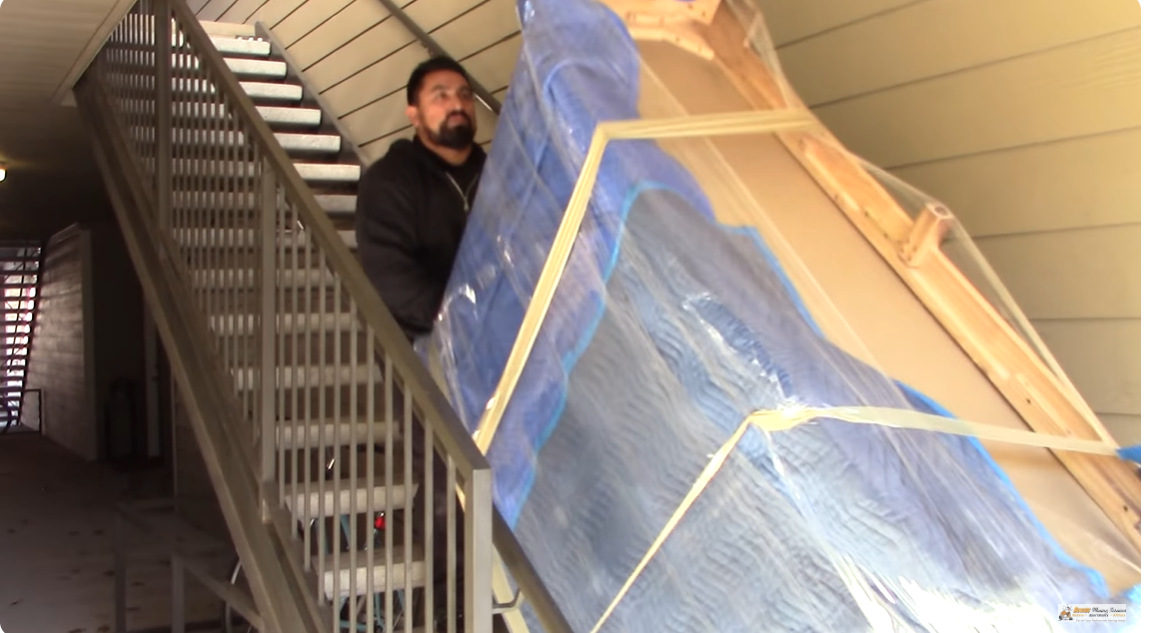Let’s face it—moving house is something we all go through eventually. Whether you’re heading off to college, upgrading to a bigger place to start a family, or finally moving out of your parents’ home, the process is always a bit chaotic.
But if you’re a pianist, there’s one extra challenge that comes with relocating: how do you move your digital piano without damaging it—or your back? In this guide, we’ll walk you through some simple, practical steps to help you transport your digital piano safely and stress-free, so you can focus on settling into your new space without worrying about broken keys or strained muscles.
Table of Contents
ToggleFirst Things First – We’re Only Talking About Digital Pianos!
Before we go any further, let’s make one thing crystal clear: this guide is for digital pianos only. If you’re trying to move an acoustic piano, stop reading now and call a professional piano mover. Seriously — no exceptions.
Here’s why: acoustic pianos are massive and fragile. Some weigh over 500 kilograms (that’s more than a grand piano weighs — literally). Trying to lift or move one without the right gear and experience can damage the piano, your home, or worse — you. These instruments are delicate and expensive, and dropping one can ruin it in seconds. They also pose a serious safety risk. Ever dropped something heavy on your foot? Now imagine that times 100.

That’s why professional movers exist. They come equipped with special tools like padded dollies, heavy-duty straps, and floor protection. They know how to lift safely, move carefully, and get your piano from point A to point B without a scratch. Yes, it might cost a few hundred dollars — but that’s nothing compared to the cost of repairs, medical bills, or replacement.
Now that we’ve cleared that up…
If you have a digital piano, you’re in the right place! Digital pianos are much lighter, easier to disassemble, and safer to handle on your own. So let’s dive in and get yours ready to move the smart (and safe) way.
Can You Take It Apart?
Before you move your digital piano, the first thing to consider is whether it can be taken apart. If it can, your job just got a whole lot easier. And if you still have the original box? Even better — that will make the move significantly smoother.
Most standard digital pianos are built in two main sections: the keyboard and the stand. Usually, the keyboard is attached to the stand with screws, often located at each corner. These screws are easy to remove, but here’s a helpful tip:
Rather than taking them all the way out, just loosen them enough to slide the keyboard off the stand. Then tighten them back into place. This way, you won’t lose them, and they’ll already be in the right position when it’s time to reassemble.
As for the stand or case, it typically consists of three parts: two side panels and a pedalboard. These are also held together with screws. If possible, keep the screws in their original holes after you disassemble. It saves you the hassle of keeping track of small parts, and again, makes reassembly much easier. If you must remove the screws completely, be sure to store them safely — a labeled zip-lock bag works great.
Once you’ve done all that, your piano should now be in four separate parts, ready to load into your vehicle and transport to your new space.
This guide assumes you’re working with a typical home digital piano — one with a built-in stand or cabinet. If you own a stage piano, you’re in luck. These are designed to be portable, often with detachable legs or a folding stand, so they’re much easier to move.
But if you’re dealing with something heavier or more complex — like a Yamaha AvantGrand or a Roland upright — it might be worth hiring a professional. These models are more delicate and significantly heavier. Trying to move one without the right tools or experience could result in damage to your piano — or yourself.
Car or Van: Which Is Better for Moving a Digital Piano?
If you have access to a van, that’s definitely the easier option. In most cases, you won’t even need to take the piano apart. That means less risk of scratching the surface or losing small screws. Just make sure the piano is secured properly inside. Use strong straps or bungee cords—you don’t want it sliding around while you’re driving down the road at 50 mph!
Now, if you’re using a car, things get trickier. Digital pianos are long and heavy, and chances are it won’t fit along with the rest of your stuff. You might need to make more than one trip or get a little creative with how you pack. If possible, renting a van for a day could be a much better and safer option. But if you’re only moving a few blocks away, using your car might still work just fine.
If you do decide to hire a van, here’s a tip: look for one with an automatic tail lift. This feature makes loading a whole lot easier—especially if you’re keeping the piano in one piece. No tail lift? Then at least make sure you’ve got a strong ramp. Whatever you do, don’t try to lift a full-sized digital piano into the van from the ground by hand—that’s a good way to pull a muscle or get injured.
Finally, and most importantly—don’t do it alone. Grab a friend or family member to help. Moving something big and heavy is always safer (and faster) with two people.
Protecting Your Piano During Transport
This might seem obvious, but protecting your digital piano is absolutely crucial when moving it. Before you start, make sure all cables and plugs are safely wrapped up and out of the way to avoid damage or tripping hazards. Use carpets, blankets, or sheets to shield your piano from scratches and dents. Trust me, it’s heartbreaking to finally set up your piano in your new home only to discover a deep scratch or gouge because it wasn’t properly protected.
Most digital pianos are made from MDF or chipboard, materials that are surprisingly fragile and can scratch or dent easily. Remember, your piano is an investment, so treat it with the care it deserves.
Whether you’re using a car or a van, always make sure the piano is securely strapped down. A piano sliding around during transit isn’t just bad for your instrument—it can damage your vehicle and, worse, pose a safety risk to anyone nearby.
How to Handle Stairs Safely
Stairs are often the toughest part of moving a piano. Whether it’s still fully assembled or packed in pieces, you’re dealing with a large, heavy, and awkward object that doesn’t easily fit on staircases. But don’t worry, with the right approach, you can get it done safely.

First tip: if you can avoid stairs, do it. If your new building has an elevator, use it. If your piano is too large for the passenger elevator, ask if there’s a service elevator available—you’d be surprised how often there is!
If stairs are your only option, take it slow. Always have at least two people helping you. Wear comfortable shoes and gloves for a good grip and safety. It’s also helpful to have someone go ahead to guide you and point out any hazards you might not be able to see yourself.
When to Call in the Professionals
If you ever feel unsure or unsafe at any point, don’t hesitate to hire a professional piano mover. Digital pianos aren’t as heavy as acoustic ones, but they’re still hefty and fragile. A single slip could damage the piano—or worse, cause injury.
Moving bulky, heavy items is risky. Luckily, most cities have companies that specialize in piano moving. They’re experienced, careful, and usually affordable. Don’t be afraid to reach out and get some help—it’s well worth it for peace of mind.
I’d love to hear what you think about this guide. Did I miss anything important? Or maybe you disagree with some advice? Drop your thoughts in the comments below!

